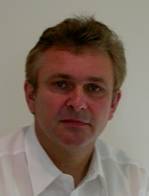SEMINAR
The Key Lab of Inorganic Functional Materials and Devices
Shanghai Institute of Ceramics, Chinese Academy of Sciences
中 国 科 学 院 上 海 硅 酸 盐 研 究 所 无 机 功 能 材 料 与 器 件 重 点 实 验 室
New Developments in X-Ray Storage Phosphors
(闪烁材料、电介质等)
Speaker
Prof. Heinz von Seggern
德国达姆斯塔特技术大学
时间:2014年6月23日(星期一),15:30
地点:上海硅酸盐研究所 二号楼607会议室
联系人: 李永祥 (52411066)
Prof. Dr. Heinz von Seggern
Electronic Materials Division, Institute of Materials Science
Technical University of Darmstadt
Petersenstrasse 23, 64287 Darmstadt, Germany
Scientific career
- 1970 – 1972 Physics at University of Hannover
- 1972 – 1975 Physics at University of Hannover, Diplom
- 1976 – 1979 Dr.-Ing. at TU Darmstadt
- 1979 – 1980 Postdoc at Bell Laboratories, Murray Hill, New Jersey, USA
- 1980 – 1981 Physikalisch Technische Bundesanstalt (NIST), Braunschweig
- 1981 – 1985 Principal Investigator at Bell Laboratories
since 1997 Full Professor at Technische Universit?t Darmstadt, Materials and Geo Science , Head of Electronic Materials Group
Current research topics
- Organic Electronics
- Scintillators and Photostimulable Phosphors
- Dielectric Materials
Abstract
X-ray storage phosphors in the form of image plates have gained a considerable importance in the field of medical diagnostics and materials science. In the present talk the basic function of x-ray storage phosphors will be introduced and the meaning and importance of the most prominent performance factors which are lifetime of the excited state, readout time and spatial resolution are addressed. By means of variation of material’s composition the tuning of these factors will be demonstrated for the conventional storage phosphor BaFBr:Eu2+. Since, however, especially in mammography, the spatial resolution of today’s image plates has to be improved, a new material, namely CsBr:Eu2+, was introduced [1]. This material exhibits a higher efficiency and an improved spatial resolution compared to the conventional material. The high resolution of this material stems from its needle-like structure which forms by vapor deposition [2] and the high PSL-sensitivity relates to crystal defects, which are related to oxygen and water incorporation [3,4]. The storage centers and their physics are addressed. In order to decide which hole center is the most likely one, a deep view into the complex physics and into the involved defect centers of this new phosphor is given. In addition, functional density calculations were performed, which show that some older points of controversy can be removed. Finally a new application of storage phosphors in material science will be highlighted which was installed at the DESY in Hamburg.


 当前位置:
当前位置:

